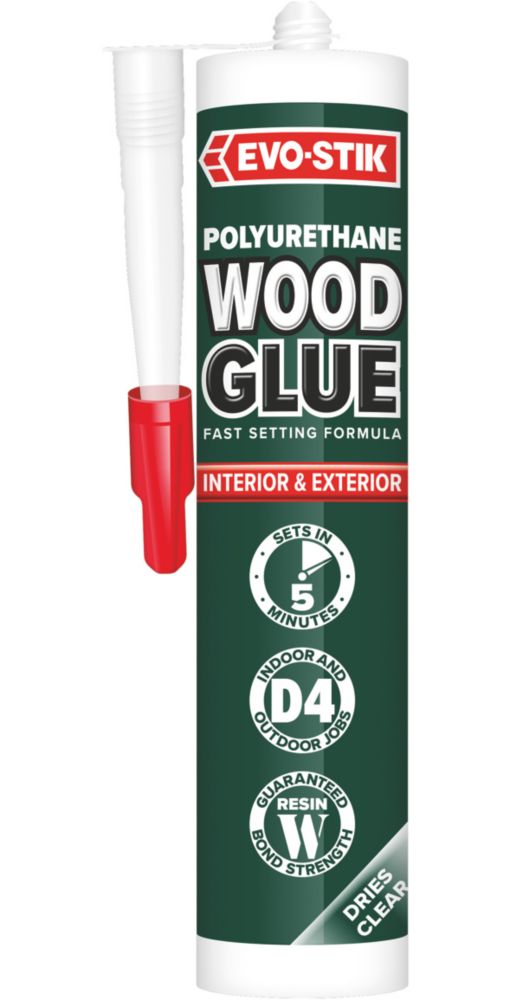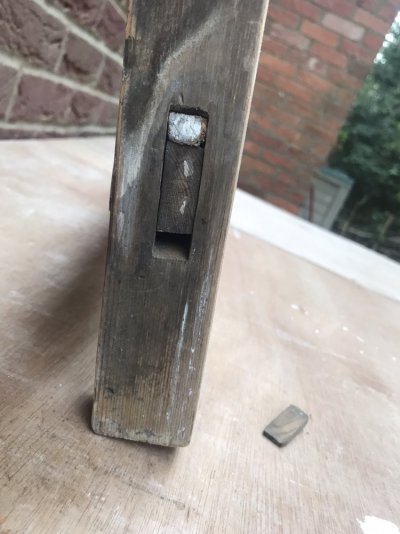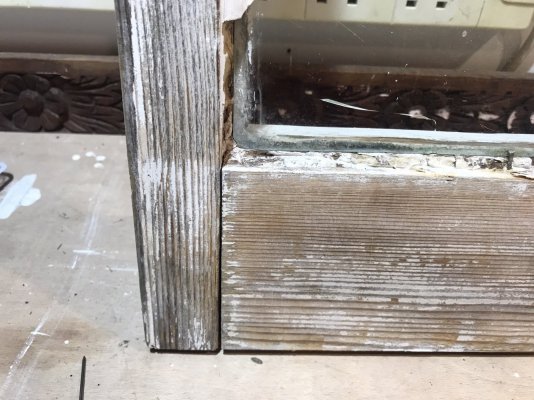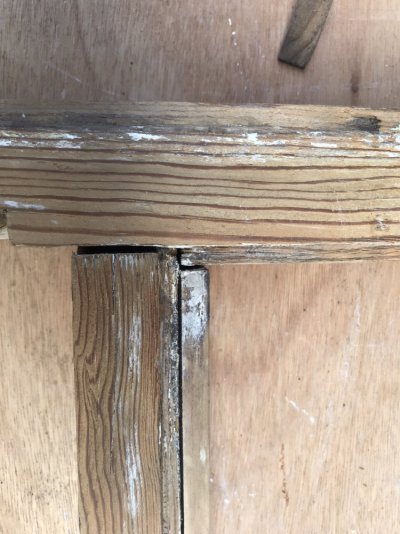You are using an out of date browser. It may not display this or other websites correctly.
You should upgrade or use an alternative browser.
You should upgrade or use an alternative browser.
Advice requested on sash window repair
- Thread starter Nickl
- Start date
Timbabuild or similar require a gap of at least 5mm to work well. The recommended method is to route out the gap to achieve this and then fill.
Honestly, if it were me I would use RepairCare fine surface filler which works up to 5mm. And on your first pic I would try inserting a new wedge first then filling the small gaps after. You appear to have no rot, just shrinkage, so no need for drastic action imho.
Honestly, if it were me I would use RepairCare fine surface filler which works up to 5mm. And on your first pic I would try inserting a new wedge first then filling the small gaps after. You appear to have no rot, just shrinkage, so no need for drastic action imho.
Stevers
Member
- Messages
- 965
- Location
- Mendip Hills
It's not something I've done often, but a sash clamp might be able to gently close the gaps, then you could drive the wedges home to keep them that way. The success of this might depend on when the glass was last puttied so don't force it. New wedges are easy enough to cut if you measure carefully to get the angle - but make them a bit too long and cut off the excess once home.
When back to bare wood I apply a couple of coats of clear wood preservative, because well, why wouldn't you when you get a chance.
When back to bare wood I apply a couple of coats of clear wood preservative, because well, why wouldn't you when you get a chance.
Slightly heretical and will probably trigger Mr Newell but for old loose wood joints I’ve used this -

 www.screwfix.com
www.screwfix.com
It expands to fill the gaps, so make sure everything is clamped tight so it fills and sticks the joint in the right place and angle, it also can get a bit messy and sticks to everything so wear disposable gloves!

Evo-Stik Polyurethane Wood Adhesive 310ml - Screwfix
Order online at Screwfix.com. Sets in just 5 minutes for a waterproof, maximum strength bond. Can be sanded or painted. Suitable for interior and exterior use. FREE next day delivery available, free collection in 1 minute.
It expands to fill the gaps, so make sure everything is clamped tight so it fills and sticks the joint in the right place and angle, it also can get a bit messy and sticks to everything so wear disposable gloves!
Stevers
Member
- Messages
- 965
- Location
- Mendip Hills
Not as far as I can tell. I've used various clear solvent based preservatives over the years and am currently working through a tin of Blackfriars Gold Star Clear preservative. Never had a problem with paint adhesion, even when I have really soaked the wood as I did with my fancy bargeboards in 2000 or so. I've always waited until it's dried properly and it would be a good idea to follow any instructions for drying times and preparation for painting on the tin. If the wood is a bit weathered there is the option of following up with a wood hardener of some description. I'm not convinced by the Ronseal solvent types, but I have been more impressed with this Bonda Resin Wood Hardener that is said to react with damp to set.
https://www.rustins.ltd/bonda/our-products/hardeners/bonda-wood-hardener-
The two part epoxy hardeners work well, but seem a step too far for apparently sound wood.
If you've hardened the wood, and some primers (Dulux Weathershield?) seem intended to do this, good adhesion will be dependant on properly keying the surface for your chosen paint system. I like self-priming paints for simplicity, International Ranch Paint was my go to for some years, but is no longer available. Ranch Paint lasts really well, but in my experience is resistant to overcoating with anything but Ranch Paint. The last painting I did was with Zinsser All Coat (solvent based), which I tinted myself, and with thorough prep, that seems to have adhered well.
As has been said before, applying the paint is just an afterthought to all the preparation that is required for a good lasting job.
https://www.rustins.ltd/bonda/our-products/hardeners/bonda-wood-hardener-
The two part epoxy hardeners work well, but seem a step too far for apparently sound wood.
If you've hardened the wood, and some primers (Dulux Weathershield?) seem intended to do this, good adhesion will be dependant on properly keying the surface for your chosen paint system. I like self-priming paints for simplicity, International Ranch Paint was my go to for some years, but is no longer available. Ranch Paint lasts really well, but in my experience is resistant to overcoating with anything but Ranch Paint. The last painting I did was with Zinsser All Coat (solvent based), which I tinted myself, and with thorough prep, that seems to have adhered well.
As has been said before, applying the paint is just an afterthought to all the preparation that is required for a good lasting job.



